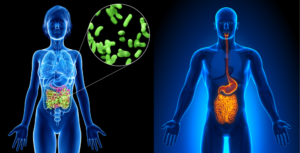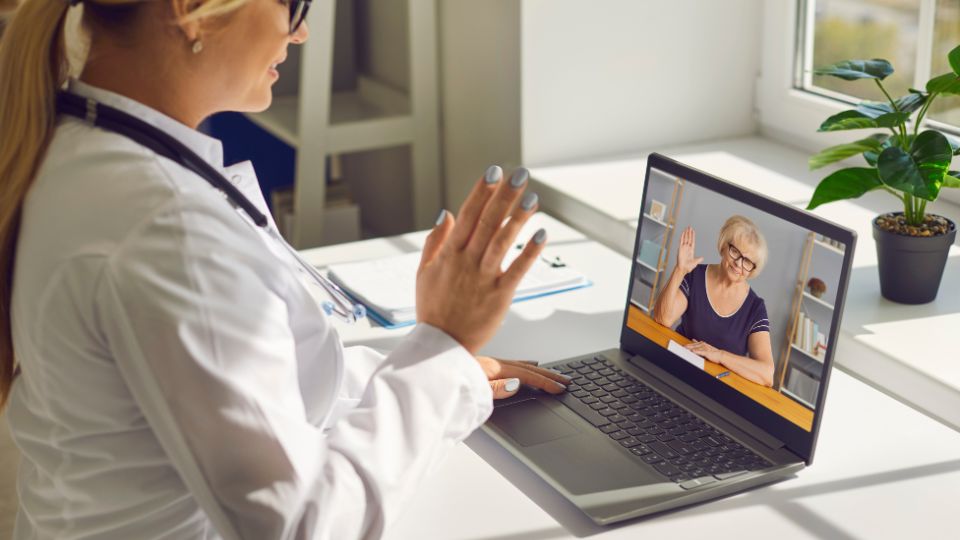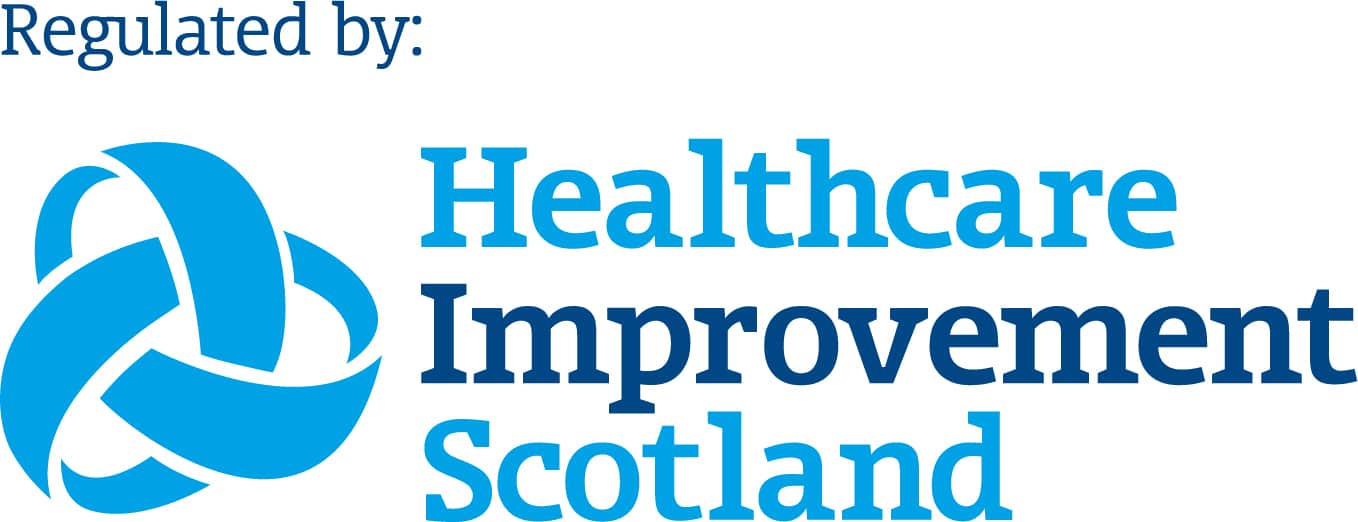
I scan men and women everyday for abdominal ultrasounds. Their doctors refer them because they either have abnormal liver function tests (shown in blood test results) or they are experiencing abdominal pain that may radiate to their back, may keep them up at night or may give them heartburn.
What can ultrasound imaging show?
Patients always want me to find something wrong so they can either take medication or see a surgeon to fix it. They want me to find gallstones so they have something to blame their pain on and a medical course of action to correct it, and preferably not have to adjust any of their behavior.
However, most of the time, all I find on ultrasound is excessive ‘intraabdominal’ aka ‘visceral’ fat (fat around the organs in the abdomen). Sadly, this doesn’t often get mentioned by the doctor or sonographer reporting on the scan. They will comment on the shape, size, and texture of the organs and if there are any cysts or masses. They will report if they find any variations from normal anatomy or if there are any prominent lymph nodes or abnormal fluid collections. If the sonographer makes note of a particularly tender spot on the patient, the report may say ‘The region of interest was tender, but no sonographic abnormality was identified’. They may suggest in their report that if clinically indicated, a CAT Scan (CT) may be appropriate, or repeat ultrasound in 3 months if symptoms persist.
When I have finished someone’s ultrasound, they invariably ask me, ‘Did you find anything wrong?’
This puts me in a tricky position and can leave referring doctors at a loss, also. It’s not common practice to comment on an ultrasound report that there is excessive fat in a patient. The referring doctor may read an unremarkable report and tell the patient, ‘nothing’s wrong, the ultrasound came back normal. ’ Understandably, patients feel disappointed because they’re in pain. They know their own body and that something’s not right, so it is very frustrating to be told it’s normal.
How does fat in the abdomen look like?
Look at this example of two ultrasound images. Here, I am imagining the aorta (the big blood vessel that takes blood from the heart to the legs). These images are from two different patients. I have marked the images so you can appreciate the depth of the aorta in each patient.
On the left, you can see the aorta (the black tube-like structure) in the patient with a healthy weight is about 8cm deep. On the right, in the patient with increased visceral fat, someone who is classified as obese, the aorta is about 16cm deep. That means there is 8cm of extra padding between the ultrasound probe and the aorta than there needs to be. That’s massive! But that won’t be reported.
Why Doesn’t Visceral Fat Get Reported?
In a radiology report, you’ll often read about what is NOT there. For example:
There are no gallstones or polyps. There is no gallbladder wall thickening or fluid. No abnormality seen in the spleen, pancreas, liver, kidneys, and adrenal glands. The bile duct is not dilated. No cyst or mass was seen in the abdomen. There is no free fluid. The aorta is not aneurysmal.
I realise this is generally a very helpful report and one that most would be happy to receive – everything is normal. But why do my patients have abdominal pain?
How can fat cause pain?
More often than not, a contributing factor to these patients with non-specific abdominal pain is excessive visceral fat. It’s surrounding their organs and affecting the way their bodies function. Like anything, fat can become inflamed, which makes it painful and can cause trouble. Having a bit of fat is a good and healthy way to be. Fat is important! It’s one of our energy sources, it keeps our organs warm and protects them from traumatic injury – a bit of padding like an airbag. But, you can have too much of a good thing, and unfortunately, I think the new ‘normal’ is for our society to be carrying too much abdominal fat.
Let’s look at another example:
Here are images of the liver and right kidney in two different patients. One with a healthy body weight and one who is obese. Again, you can see there is more depth in the images of the obese patient. That means there is more tissue for the ultrasound beam to get through, so the image is not as clear.
In the top images, you can see the liver outlined in blue and the right kidney outlined in yellow. See how close to each other they are? They’re touching. Now look at the bottom images, the kidney and liver are not touching. They are separated by a thick layer (approximately 2cm) of fat highlighted in green. Once again, although this isn’t normal, it won’t be reported by the doctor or sonographer.
Why does fat need tackling?
Among other things, carrying excessive belly fat increases your risk of developing Type 2 Diabetes, cardiovascular disease, sleep apnoea, colorectal cancer, and having a shorter life expectancy than people with a healthy body weight. It’s a really important piece of anatomy to be aware of and monitor.
The good news is, belly fat can be lost! There are no quick fixes to this chronic problem. It didn’t appear overnight, it’s not going to disappear overnight. You don’t have to take special drugs or undergo complicated and dangerous operations. The answer is simple. So simple that people can’t believe that it will work. The trick to losing belly fat is to simply eat real food. Just eat vegetables, fruit, meat, fish, eggs, legumes, herbs, and spices. Put down the processed ‘food-like’ products and eat real, fresh produce – as close to its source as possible, and you can’t go wrong. Your body will take care of the rest. It’s amazing!
Now that you’ve seen ultrasound images of abdominal fat, will you start to think about the reality of what is in your belly? If you suffer from abdominal pain and medical tests have said everything appears normal, think about your organs trying to function the best they can in a difficult environment, surrounded by excessive fat. Maybe your pain is coming from your excess abdominal fat. Give your body the chance to sort this stuff out. Give it a break from junk ‘food’ and just eat real food.
If you’d like help with changing your diet, our wonderful dieticians, Laura Court and Sarah Macklin, are here to help.
Book a Gut Health Appointment at ROC
Contact our friendly reception staff here to make an appointment.



5 Responses
This is an extremely intelligent report albeit more intuitive than scientific which is in fact what makes it so impressive. I suffer abdominal pains that have gone unexplained until now – probably ie., excess belly fat. Thank you
Great combination of scientific facts and informal English to make it easy to read and understand. Thanks!
I think, this is a great piece of information, thank you so much for sharing!!
I have been suffering from belly pain for years, have had all the diagnostic tests, CT,MRI, endoscopy, ultrasound etc. Everything always comes back as fine. My abdominal area feels like it’s being severely constricted. Not always but quite often. It’s also protruding. I lose weight, everywhere but there. Only one technician mentioned visceral fat after I questioned him thoroughly. The discomfort is very troubling. I appreciate finding this article.
A question as I’m also suffering. Is your pain like sharp cramping they feels muscular?